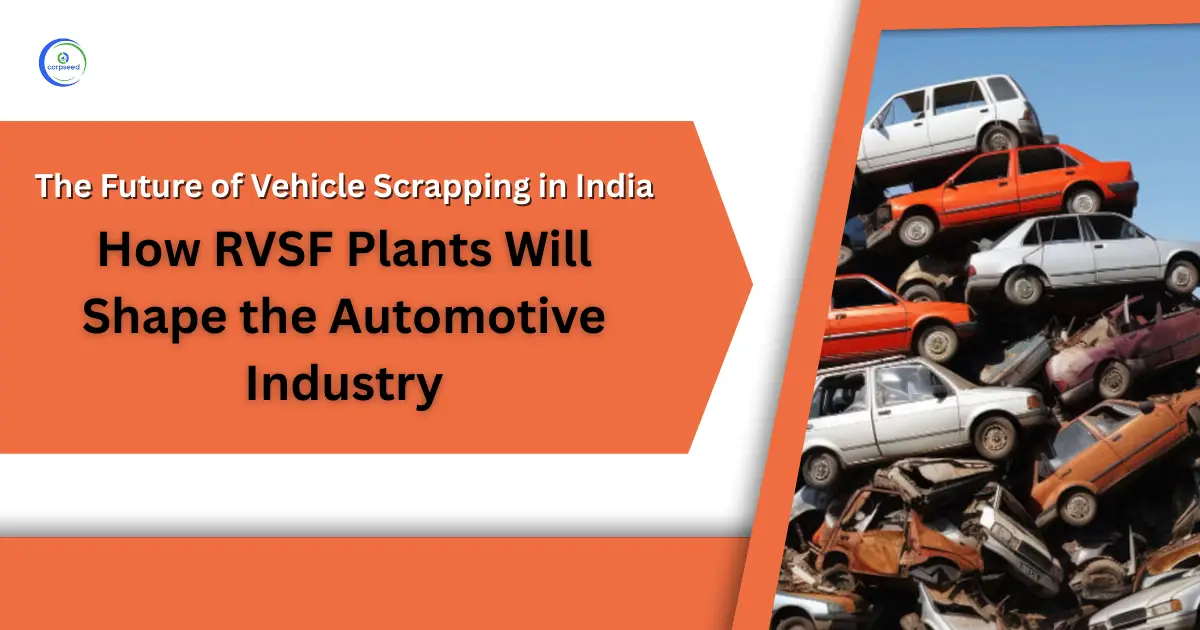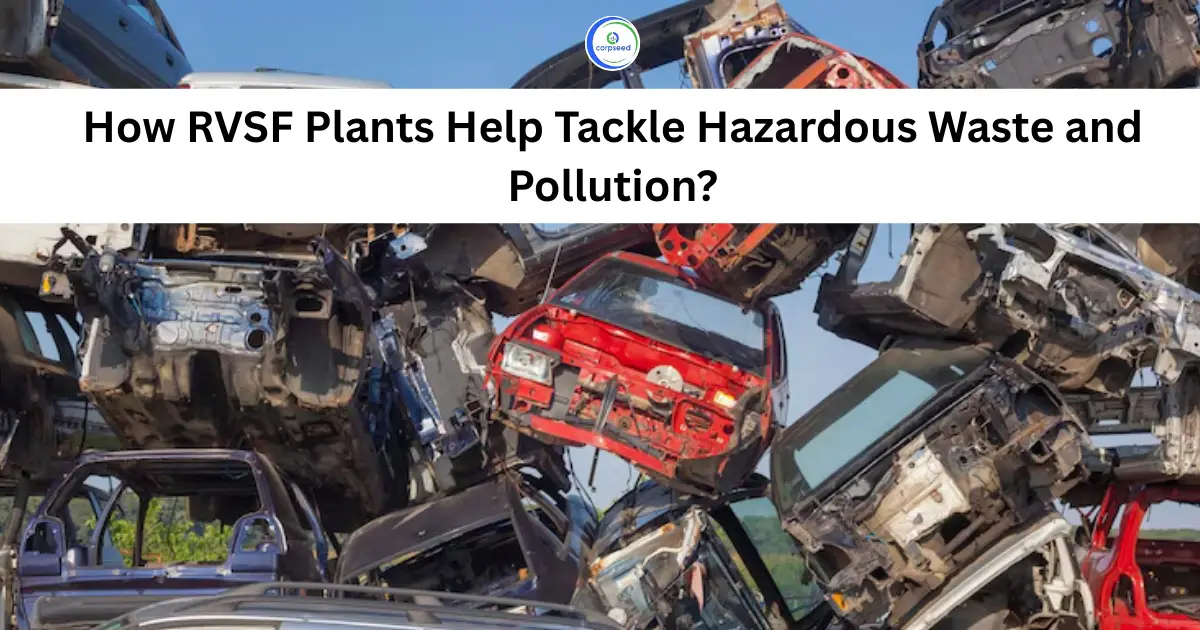As the world increasingly focuses on sustainability and environmental responsibility, the role of vehicle scrapping and recycling facilities (RVSF) has become more important. End-of-life vehicles (ELVs) are an important source of recyclable material, and right vehicle scrapping and recycling are crucial to reducing waste and minimizing the automotive industry's environmental footprint.
Table of Contents
Understanding RVSFs and ELVs
Before starting with the particulars of RVSF to be effective, it is important to understand the terms and ideas involved. End-of-life vehicles (ELVs) are cars, trucks, motorcycles, or other motor vehicles that are no longer functional or are too expensive to repair. Once a vehicle extends the end of its life, it becomes an ELV, and the requirement for scrapping and recycling rises. The Vehicle Scrapping and Recycling Facility (RVSF) is a professional facility that dismantles, scraps and recycles ELVs to get better reusable materials such as metal, plastic and glass, as well as properly dispose of other hazardous materials such as oil and battery fluids. The need of RVSF in the recent automotive and recycling industries are crucial. An appropriate recycling guarantees that End-of-life vehicles (ELVs) do not add to environmental pollution and also help to mitigate the requirement for mining raw materials. This is where the proficiency and effectiveness of the plant come into play.
--------------Blog Contact Form-------------
Key Factors for Successful Vehicle Scrapping and Recycling
Several factors define how well an RVSF performs, which affects the overall success of vehicle scrapping and recycling. These include the approach towards accredited facility design, technology use, regulatory compliance and sustainability. Following are the key factors:
- Advanced Technology and Machinery: The most important element in RVSF plant effectiveness is the use of modern, effective technology. Advanced machinery vehicles play an important role in safe waste removal, accurate identification of recyclable materials and waste reduction. Automated shredders, car grinders and material segregation technology permit quick and efficient extraction of fine metals and other precious materials from ELVs. The use of state-of-the-art machinery confirms that these possibly hazardous materials are controlled with care and recyclable materials are recovered with high accuracy. It reduces the fuel contamination and the quality of recycled products is maximized.
- Proper Dismantling and Segregation of Materials: The process of dismantling the ELV is essential to confirm that the valuable material can be professionally recovered. Effective material separation includes separating valid reusable parts such as engines, wheels and batteries as well as scrap metal, plastic and other materials. Component reuse is one of the most recognized good practices in the scrapping industry, as it prolongs the life cycle of vehicle parts and minimizes the requirement of making new parts. A well-organized RVSF must have a chosen area for sorting, dismantling and storing materials. This technology has not only made the process more efficient but has also helped in reducing the amount of waste going to landfills. By following a systematic dismantling process, the plant can extract high-value materials including copper, aluminium and steel, which are in high demand in manufacturing industries.
- Environmental Compliance and Regulations: To operate RVSF (Vehicle Scrapping and Recycling Facility) in India has to adhere with important environmental regulations to function the facility more efficiently, controlling hazardous material disposal and confirming sustainable operations. These consist of the Hazardous and Other Wastes (Management and Transboundary Movement) Rules, 2016, and the Environment Protection Act, 1986, which established standards for air, water, and soil pollution. RVSFs have to manage hazardous materials like oils and batteries safely, recover treasured materials, and maintain comprehensive operational records. Apart from legal compliance, RVSFs in India are gradually implementing more sustainable practices like by minimizing energy consumption, using renewable energy and reducing water use. These determinations contribute to their overall efficiency while also ensuring responsible recycling of end-of-life vehicles (ELVs). The National Automotive Scrappage Policy RVSF recommends and encourages vehicle disposal and material recovery that meet stringent environmental standards.
- Skilled Workforce and Training: A well-trained and knowledgeable workforce is necessary for the success of an RVSF. Operative vehicle scrapping and recycling needs expertise in handling complex machinery, managing hazardous materials and complying with environmental regulations. Employees should be trained on safe disposal, separation and responsible handling of recyclable materials. Regular training programs make sure that the workforce is up to date with the latest technology, safety practices and environmental principles. A skilled workforce not only increases the efficiency of the recycling process but also ensures that the facility operates safely and reduces the risk of accidents or environmental harm.
- Safety and Risk Management: An effective RVSF prioritizes safety at every stage of vehicle scrapping and recycling. ELVs often contain hazardous materials such as fuel, lubricants and airbag propellant, which can pose a serious risk to a person if not handled properly. It is important to implement stringent safety protocols, ensure proper disposal, fire prevention measures and proper handling of hazardous chemicals. Regular inspection, maintenance of equipment, and confirming workers have access to personal protective equipment (PPE) are all major components of a safe and effective RVSF. By reducing safety risks, the plant can function more efficiently and costly accidents or shutdowns can be avoided.
- Efficient Waste Management: An effective RVSF also needs an effective waste management system to reduce the amount of waste sent to landfills. While the several material can be reused, not all of the components of the ELV can be reused. It is necessary to carefully sort and dispose of waste material in compliance with environmental standards. For example, tires, glass and many plastics may need to be sent to dedicated recycling plants. By maintaining an efficient waste management system, an RVSF can make sure that as much material as possible is recycled or reused, thereby minimizing the overall environmental impact of vehicle scrapping.
Also Read: The Future of Vehicle Scrapping in India: How RVSF Plants Will Shape the Automotive Industry
Conclusion
In conclusion, the effectiveness of Vehicle Scrapping and Recycling Facility (RVSF) depends on the combination of advanced technology, skilled labour, and strict adherence to environmental regulations and commitment to sustainability. As the automotive industry continues to grow and the demand for sustainable practices increases, RVSF will play an increasingly important role in vehicle life cycle management. By focusing on these key factors, RVSFs can contribute to minimize waste, conserving resources and reducing the environmental impact of end-of-life vehicles (ELVs). As technology and regulations improve, the efficiency and effectiveness of these facilities will increase, allowing the automotive recycling industry to have a more sustainable future.
This portion of the site is for informational purposes only. The content is not legal advice. The statements and opinions are the expression of author, not corpseed, and have not been evaluated by corpseed for accuracy, completeness, or changes in the law.
BOOK A FREE CONSULTATION
Get help from an experienced legal adviser. Schedule your consultation at a time that works for you and it's absolutely FREE.









